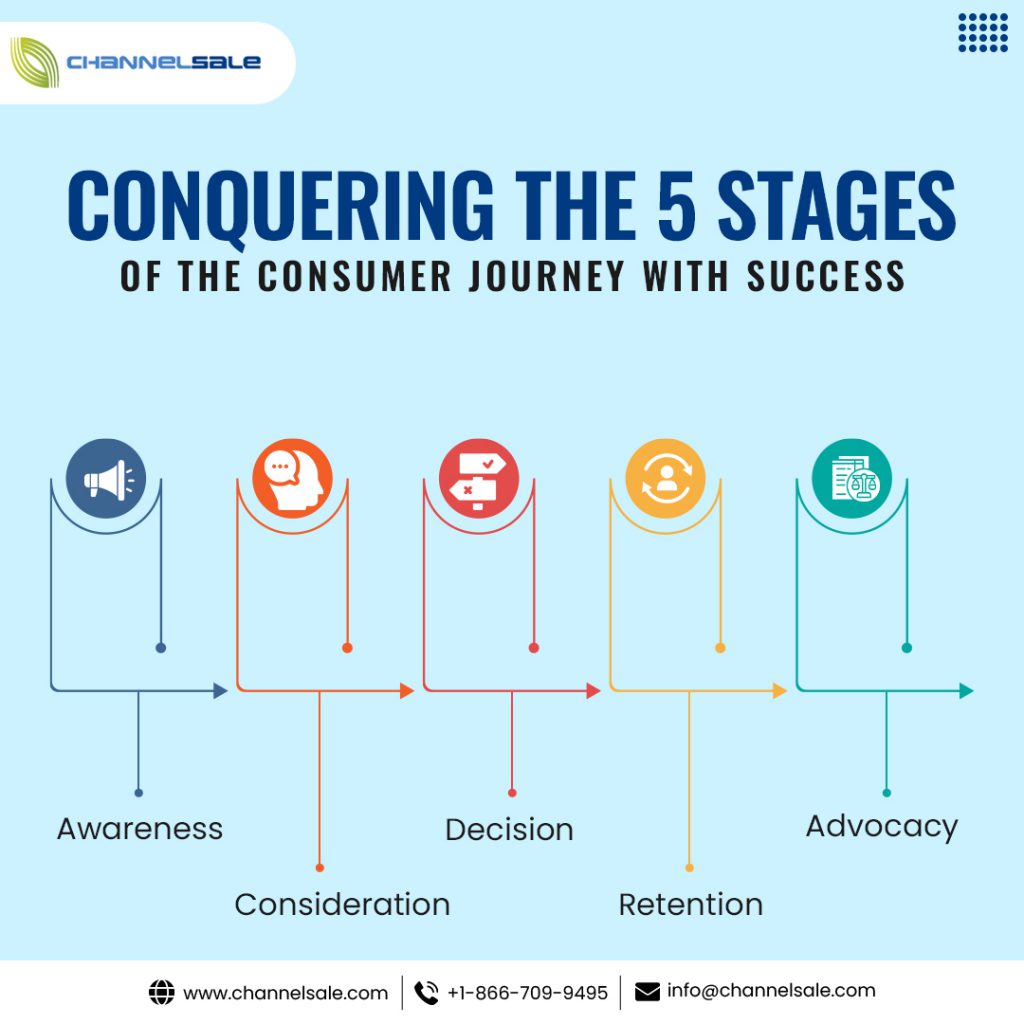A key marketing concept is the consumer journey. By comprehending and utilizing each phase, businesses can sell their products more successfully, increasing sales and customer retention. This blog will cover each stage, along with helpful business advice.
1. Awareness
The Awareness stage of the consumer experience is when potential customers first become aware of their needs, problems, or both. It’s the first step in directing clients to your product or service that focuses on solutions. Here are some suggestions for enhancing this crucial stage:
- Targeted Advertising: Target customers who are most likely to need your product or service using data-driven marketing techniques. Using tools like Google Ads or social media advertising, you can carefully target your audience.
- Educational Content: Make materials that address issues or queries frequently asked in your sector. Videos and blog posts can educate potential clients and establish your business as a reliable knowledge source.
- SEO Optimization: To ensure that your website ranks highly in search engine results, follow recommended practices for search engine optimization (SEO). When people search for relevant terms, it will be easier for them to find your company.
2. Consideration
As we continue understanding the consumer journey, let’s look at the Consideration stage. This stage is essential since it’s at this point that potential customers evaluate their options and select the service or item that best meets their needs. Effectively managing this phase can have a significant impact on conversion rates.
- Product Specifications: Transparency in product specifications is crucial. Customers want to be completely informed before making a purchase. Details about the product’s features, advantages, and possible uses are required. Customers can compare items and make more informed decisions equipped with this knowledge.
- Engaging Content: Content marketing is now a highly effective tool. Write articles, blog entries, or videos that cover the common problems your sector encounters. You gain potential clients’ trust and showcase your competence by providing useful information and solutions.
- Email Marketing: During the Consideration stage, email marketing is an effective technique to communicate with prospective customers. Send them emails with solutions to the issues they’re trying to solve in detail. Share instances of success to show how your product or service has benefited others.
- Interactive Demos and Trials: Offer free trials, webinars, or product demonstrations as necessary. Potential clients can see and touch your products in person through these interactive experiences. They learn about your value and how it meets their needs.
3. Decision
The decision-making stage is the most important. Potential customers are now prepared to purchase after reviewing their options throughout the consideration stage. Here are some ideas for enhancing this crucial stage of the consumer journey:
- Limited-Time Offers: You can create a sense of urgency by making special discounts or promotions available for a limited time. This tactic might persuade potential buyers to make a purchase.
- Building Trust: Building trust is crucial. Display case studies and client testimonials from satisfied product or service users. This instills trust in potential customers that they are making informed decisions.
- Easy Access to Support: Ensure customer assistance and contact information options are easily available. Sometimes, potential buyers have last-minute questions or concerns. Accessibility and responsiveness can help complete the deal.
4. Retention
The journey continues at the retention stage after a purchase. Building relationships with customers is crucial to guarantee their satisfaction and loyalty. Here’s how to make this stage better:
- Post-Purchase Support: Comprehensive after-sale support, including guides, instructions, and professional customer service. This reduces the likelihood of customer dissatisfaction and helps customers make the most of your product or service.
- Loyalty Programs: Implement loyalty programs that provide repeat customers discounts. These programs could provide special discounts, first access to new products or features, or cost savings.
- Feedback and Improvement: By requesting customer input, you can improve your product or service over time based on their experiences. This shows you value their opinions and are committed to offering better customer service.
5. Advocacy
The final stage of the customer journey is the advocacy stage, where satisfied customers become brand ambassadors who actively promote your product or service. Here’s how to make this stage better:
- Encourage Reviews and Testimonials: Encourage contented customers to publish encouraging testimonials and reviews on online platforms like Google, Yelp, or your website. These evaluations provide credibility and social validation.
- Referral Programs: Establish a referral program that benefits existing customers who promote their friends, family members, or coworkers to your business. They can become your supporters if you provide them discounts or other benefits.
- Celebrate and express gratitude to your loyal community.
End Note
Understanding and managing each stage of the consumer journey is essential for business success. By taking the time to address potential customers’ demands, concerns, and feedback at every stage, businesses can improve sales and foster customer loyalty. By aligning their strategy with these stages, ChannelSale has had incredible success.
You can contact us for a demo of the ChannelSale platform today from our experts.

